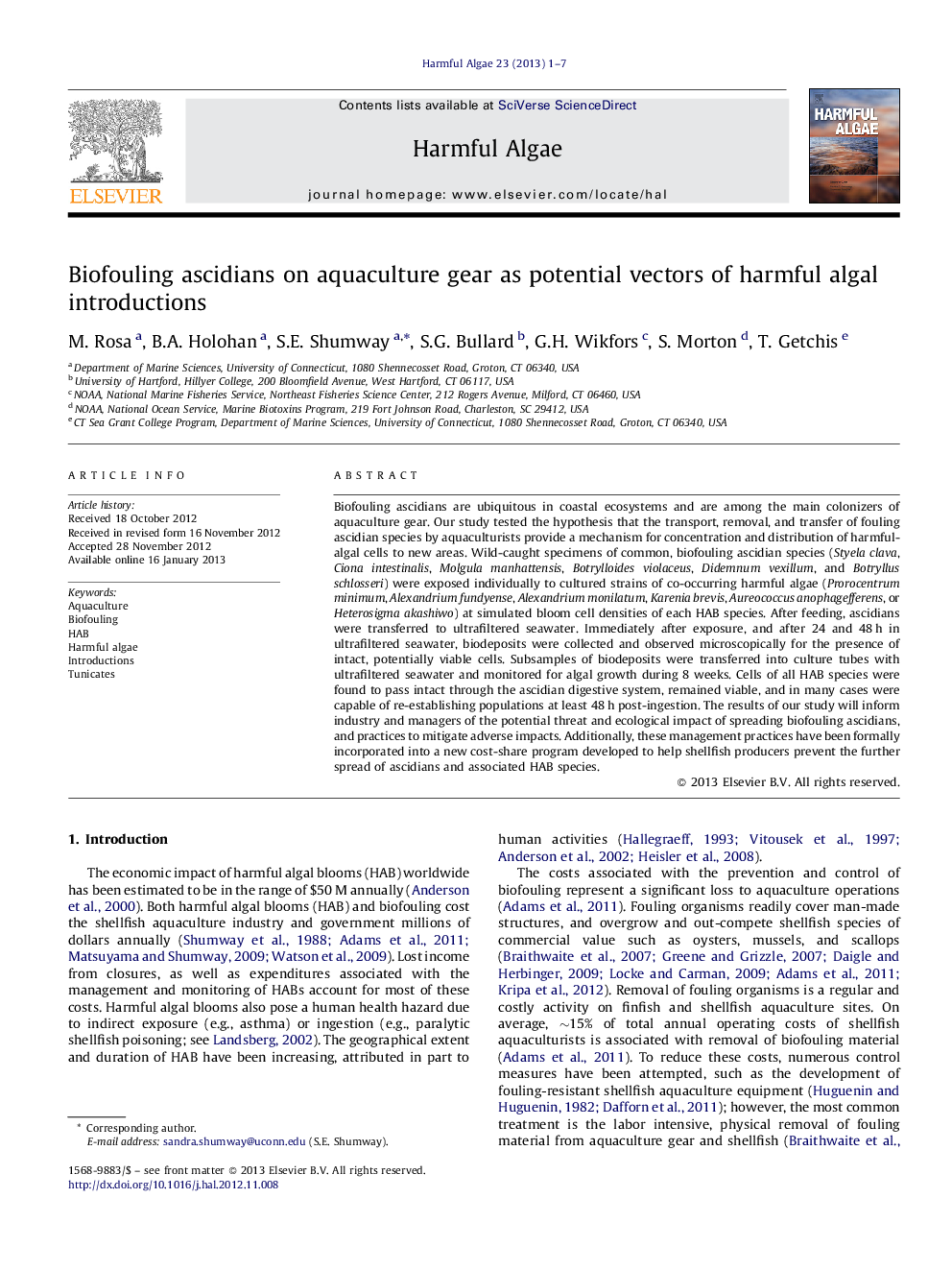| کد مقاله | کد نشریه | سال انتشار | مقاله انگلیسی | نسخه تمام متن |
|---|---|---|---|---|
| 4545461 | 1626948 | 2013 | 7 صفحه PDF | دانلود رایگان |

Biofouling ascidians are ubiquitous in coastal ecosystems and are among the main colonizers of aquaculture gear. Our study tested the hypothesis that the transport, removal, and transfer of fouling ascidian species by aquaculturists provide a mechanism for concentration and distribution of harmful-algal cells to new areas. Wild-caught specimens of common, biofouling ascidian species (Styela clava, Ciona intestinalis, Molgula manhattensis, Botrylloides violaceus, Didemnum vexillum, and Botryllus schlosseri) were exposed individually to cultured strains of co-occurring harmful algae (Prorocentrum minimum, Alexandrium fundyense, Alexandrium monilatum, Karenia brevis, Aureococcus anophagefferens, or Heterosigma akashiwo) at simulated bloom cell densities of each HAB species. After feeding, ascidians were transferred to ultrafiltered seawater. Immediately after exposure, and after 24 and 48 h in ultrafiltered seawater, biodeposits were collected and observed microscopically for the presence of intact, potentially viable cells. Subsamples of biodeposits were transferred into culture tubes with ultrafiltered seawater and monitored for algal growth during 8 weeks. Cells of all HAB species were found to pass intact through the ascidian digestive system, remained viable, and in many cases were capable of re-establishing populations at least 48 h post-ingestion. The results of our study will inform industry and managers of the potential threat and ecological impact of spreading biofouling ascidians, and practices to mitigate adverse impacts. Additionally, these management practices have been formally incorporated into a new cost-share program developed to help shellfish producers prevent the further spread of ascidians and associated HAB species.
► Harmful algal species can survive passage through the digestive system of tunicates and return to bloom concentrations.
► Some species of algae can re-establish a population after as long as 72 h post-ingestion.
► Some ascidians may serve as vectors of viable harmful algal cells.
► Tunicates may pose a greater threat than bivalve molluscs in the potential distribution of HAB species.
Journal: Harmful Algae - Volume 23, March 2013, Pages 1–7